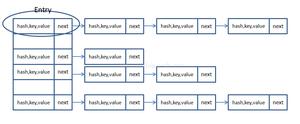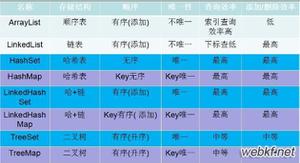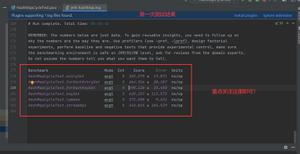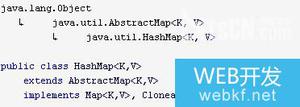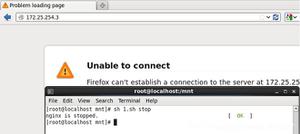请大佬帮我详细解释一下hashmap这个语句啥意思
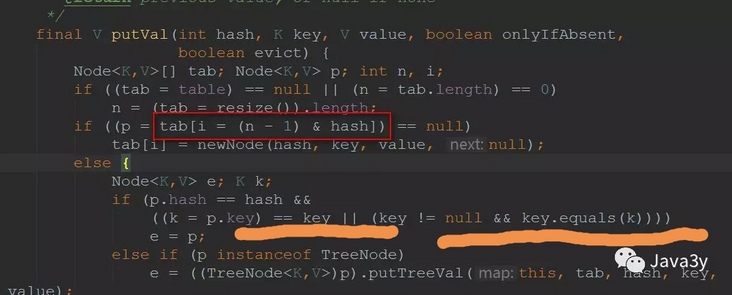
小白求问。这个画黄色的线上面这个语句什么意思。很多符号理解不了。还有在哪里短句做判断也不懂。谢谢!
回答:
摘自本人文章一文详解HashMap
final V putVal(int hash, K key, V value, boolean onlyIfAbsent, boolean evict) {
Node<K,V>[] tab; Node<K,V> p; int n, i;
// 当数组为空或长度为0,初始化数组容量(resize() 方法是初始化或者扩容用的)
if ((tab = table) == null || (n = tab.length) == 0)
n = (tab = resize()).length;
// 计算数组下标 i = (n-1) & hash
// 如果这个位置没有元素,则直接创建Node并存值
if ((p = tab[i = (n - 1) & hash]) == null)
tab[i] = newNode(hash, key, value, null);
else {
// 这个位置已有元素
Node<K,V> e; K k;
if (p.hash == hash &&
((k = p.key) == key || (key != null && key.equals(k))))
// hash值、key值相等,用e变量获取到当前位置这个元素的引用,后面用于替换已有的值
e = p;
else if (p instanceof TreeNode)
// 当前是以红黑树方式存储,执行其特有的putVal方法 -- putTreeVal
e = ((TreeNode<K,V>)p).putTreeVal(this, tab, hash, key, value);
else {
// 当前是以链表方式存储,开始遍历链表
for (int binCount = 0; ; ++binCount) {
if ((e = p.next) == null) {
// 这里是插入到链表尾部!
p.next = newNode(hash, key, value, null);
if (binCount >= TREEIFY_THRESHOLD - 1) // -1 for 1st
// 超过阈值,存储方式转化成红黑树
treeifyBin(tab, hash);
break;
}
if (e.hash == hash &&
((k = e.key) == key || (key != null && key.equals(k))))
break;
p = e;
}
}
if (e != null) { // existing mapping for key
V oldValue = e.value;
if (!onlyIfAbsent || oldValue == null)
// onlyIfAbsent 如果为true - 不覆盖已存在的值
// 把新值赋值进去
e.value = value;
afterNodeAccess(e);
return oldValue;
}
}
// 记录修改次数
++modCount;
// 判断元素数量是否超过阈值 超过则扩容
if (++size > threshold)
resize();
afterNodeInsertion(evict);
return null;
}
回答:
(k = p.key) == key || (key != null && key.equals(k))
相当于2个boolean进行或运算。即 A || B
其中 A = ((k = p.key) == key) 这句话的意思就是先将p.key赋值给k,然后判断k是否等于key。如果等于则A为true,否则为false; 该句话等同于下面的代码
K k = p.key; // 将p.key赋值给keyif (k == key) {
A = true;
} else {
A = false;
}
其中B= (key != null && key.equals(k)),这句话就比较好理解了吧。key不为null,并且key和k相等时,B为true;否则为false
以上是 请大佬帮我详细解释一下hashmap这个语句啥意思 的全部内容, 来源链接: utcz.com/p/178945.html

